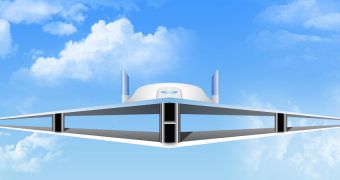Ever since the Concorde was retired from active service, in 2003, passengers have been left without access to a supersonic aircraft capable of covering a distance such as that between New York and Paris in just three hours. Now, American researchers are taking steps to address this gap.
Scientists at the Massachusetts Institute of Technology (MIT), in Cambridge, are working towards setting the foundation for the next generation of supersonic jets. Other teams are engaged in this effort as well, but only the MIT group believes it may have found a solution to most of the problems associated with supersonic flight.
When the Concorde was retired after 27 years in service, there were a host of factors that contributed to the decision. These included very high ticket costs, a declining interest from passengers, but also the sonic booms that accompanied the aircraft as it flew.
MIT assistant professor of aeronautics and astronautics Qiqi Wang believes that the solution to most of the problems encountered with developing such aircraft thus far is very simple – create an airplane that has two wings on each side.
Working together with MIT Department of Aeronautics and Astronautics postdoctoral researcher Rui Hu, and Stanford University professor Antony Jameson, Wang was able to develop a computer model showing how the biplane might look like.
The two-wings-on-the-side design enables the airplane to experience less drag as it moves through the air, especially at supersonic speeds. Details of the model will appear in an upcoming issue of the Journal of Aircraft.
Thanks to the decreased drag, the new airplane would be extremely fuel-efficient, while at the same time producing lower-intensity sonic booms. “The sonic boom is really the shock waves created by the supersonic airplanes, propagated to the ground,” the team leader explains.
“It’s like hearing gunfire. It’s so annoying that supersonic jets were not allowed to fly over land,” he adds. But these shock waves would be canceled out by the new design, which stacks one wing on top of the other, on each side of the aircraft.
The original concept was developed by German engineer Adolf Busemann, in the 1950s. According to Wang, the drawback of this design is that it produces a limited amount of lift, since only a small amount of air can flow through the narrow channel between the wings.
In order to figure out how to compensate for this deficiency, the group carried out numerous simulations, in the end coming up with about 700 wing configurations, from which they selected the optimal one.
Now that these issues have been resolved, the research group plans to move forward with designing a 3D model of the aircraft, to be tested in wind tunnels. The scientists want to discover all factors that may affect the biplane during flight.
“Now people are having more ideas on how to improve [Busemann’s] design. This may lead to a dramatic improvement, and there may be a boom in the field in the coming years,” Wang concludes.

 14 DAY TRIAL //
14 DAY TRIAL //